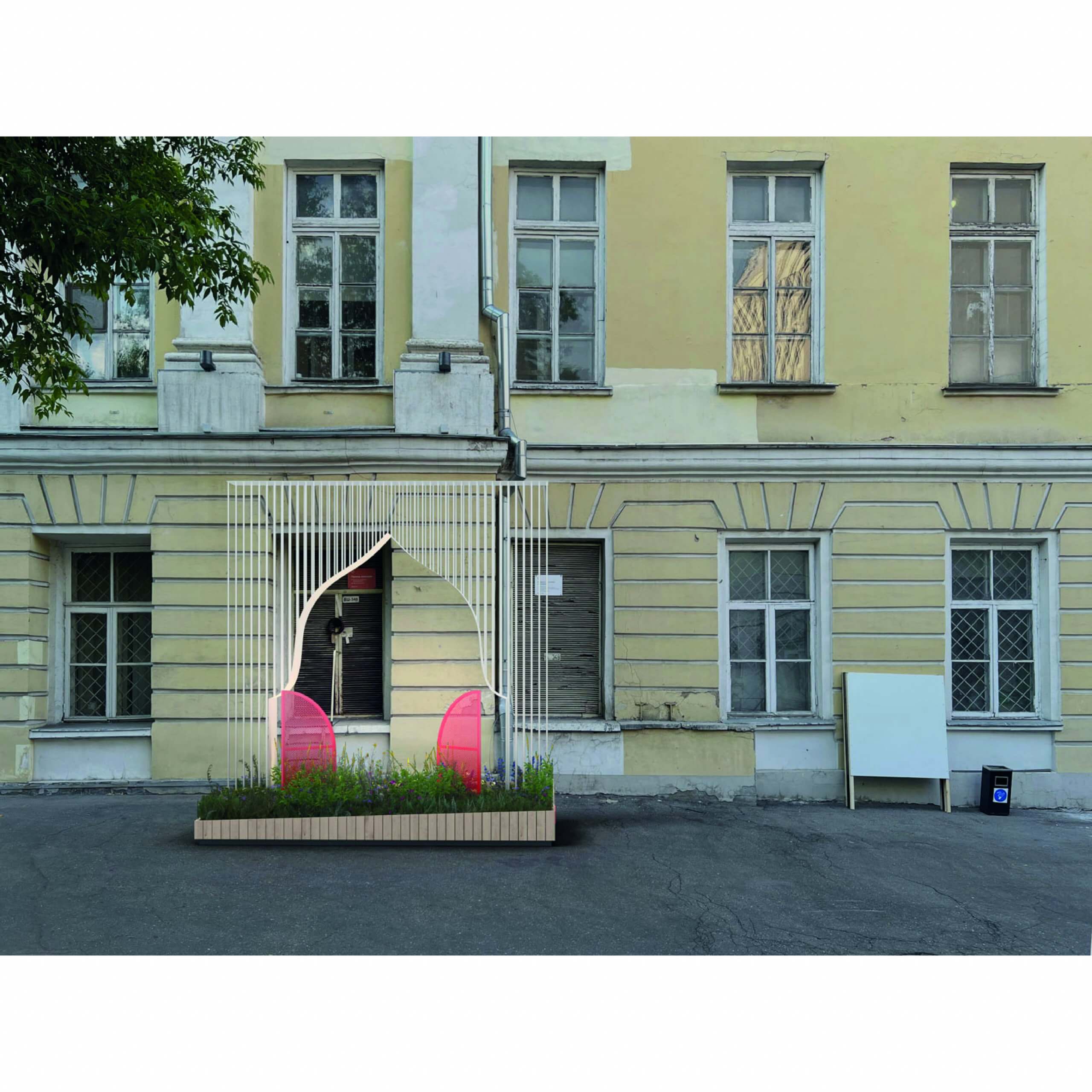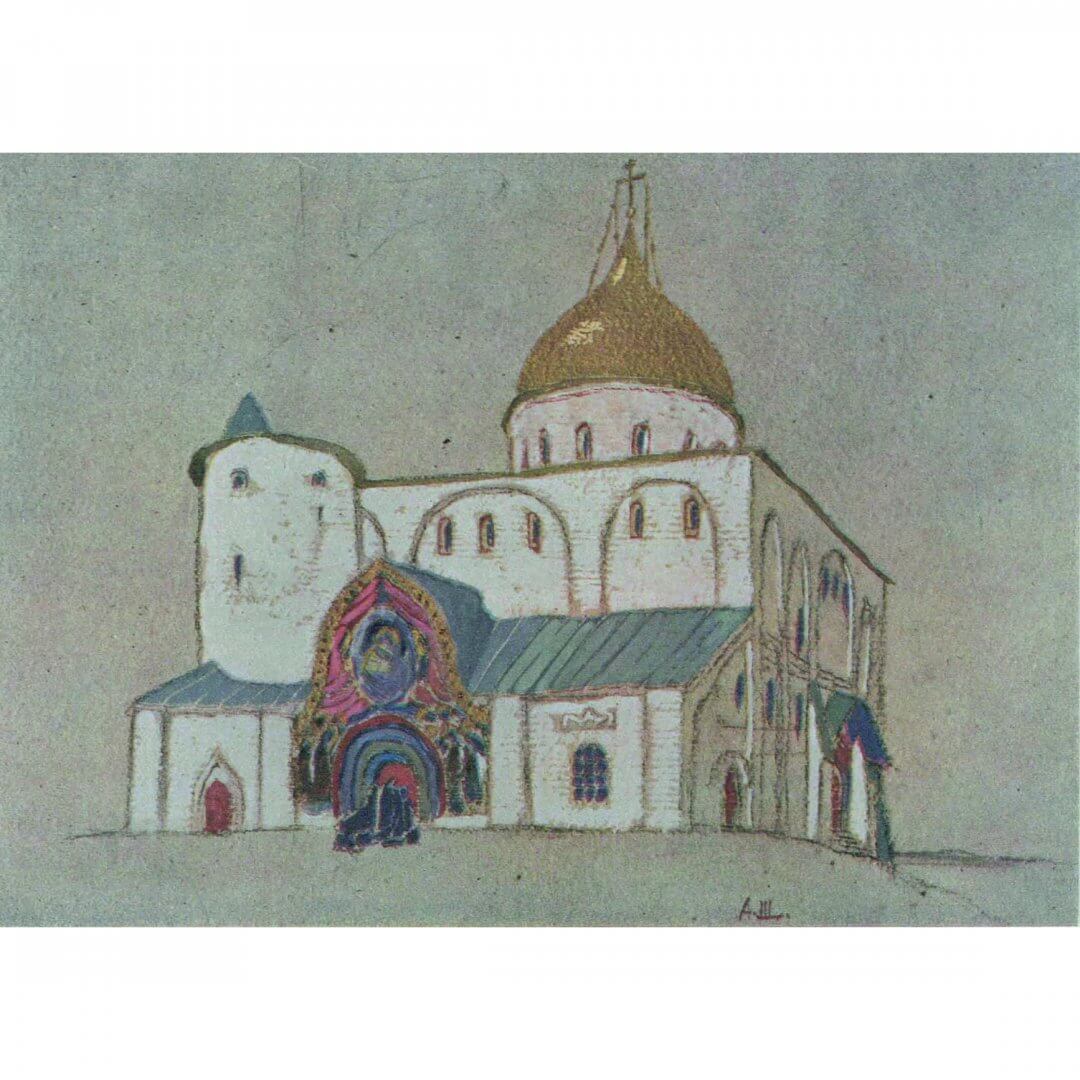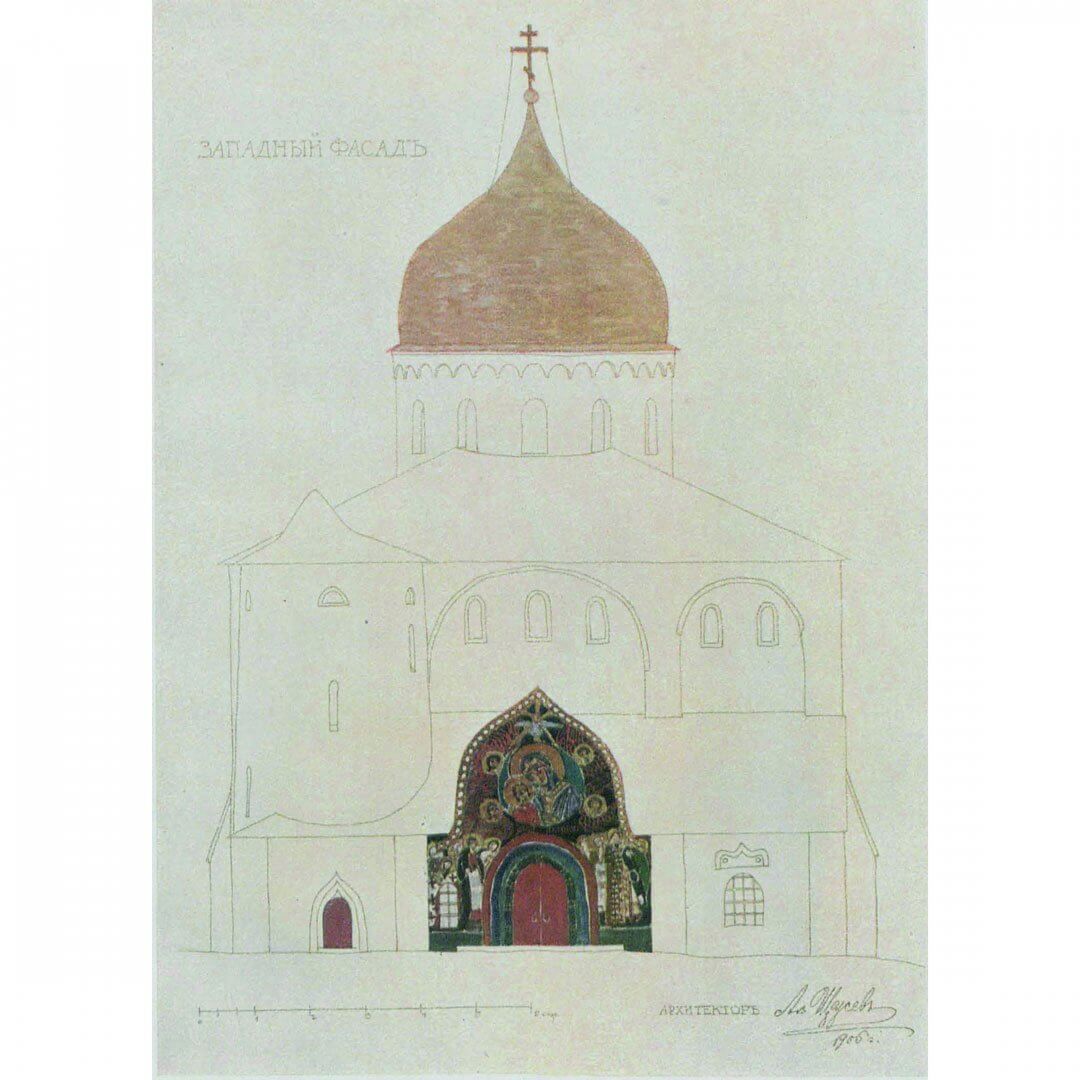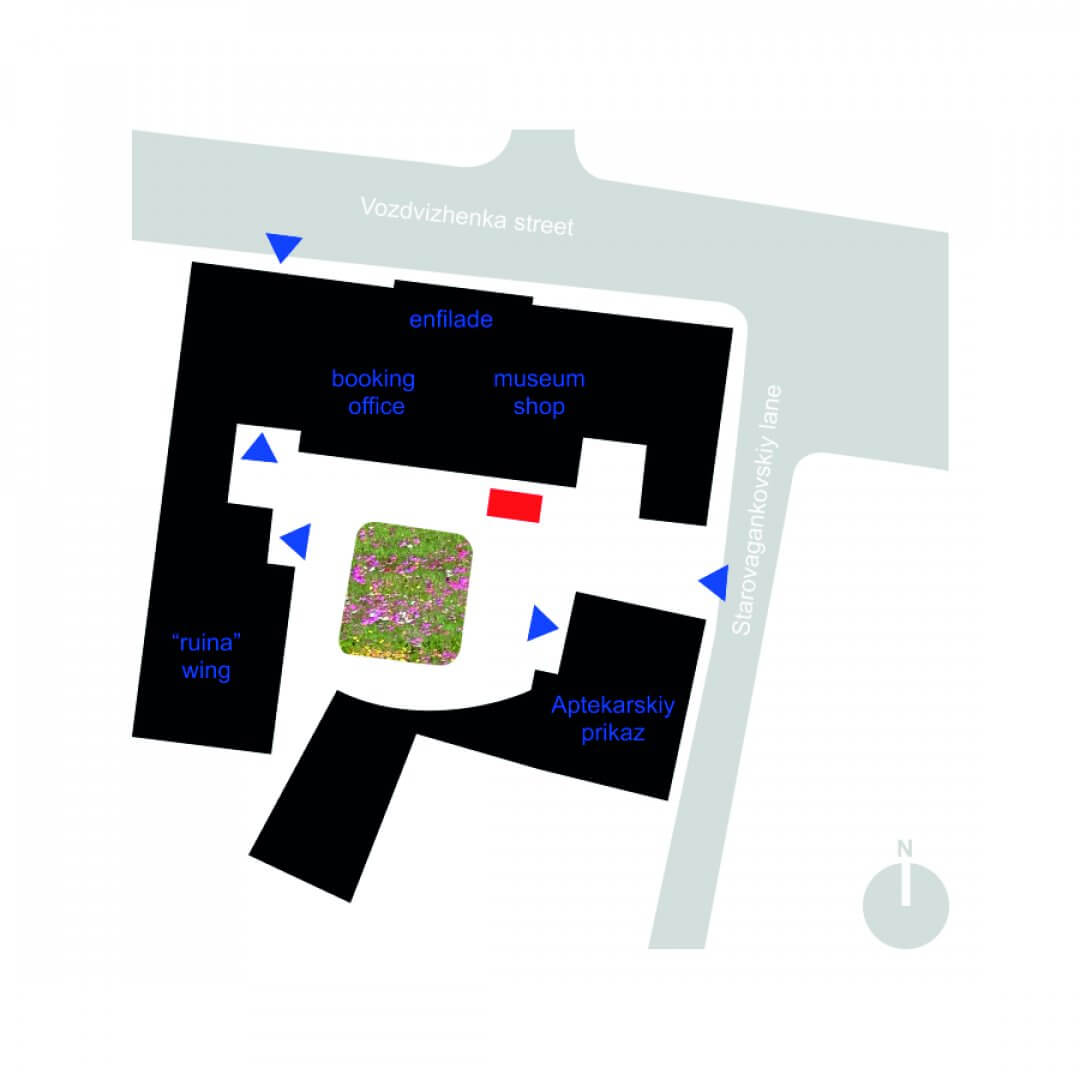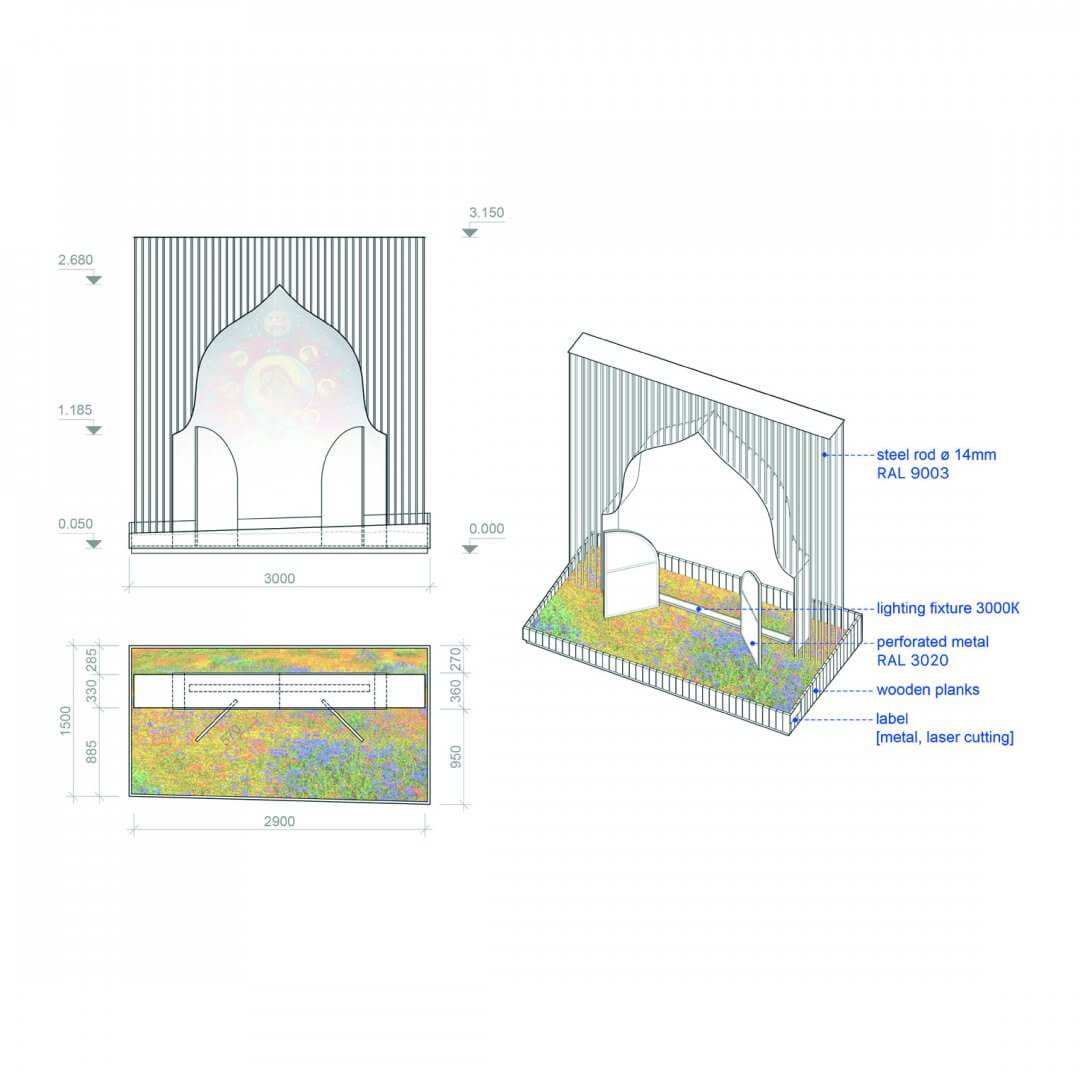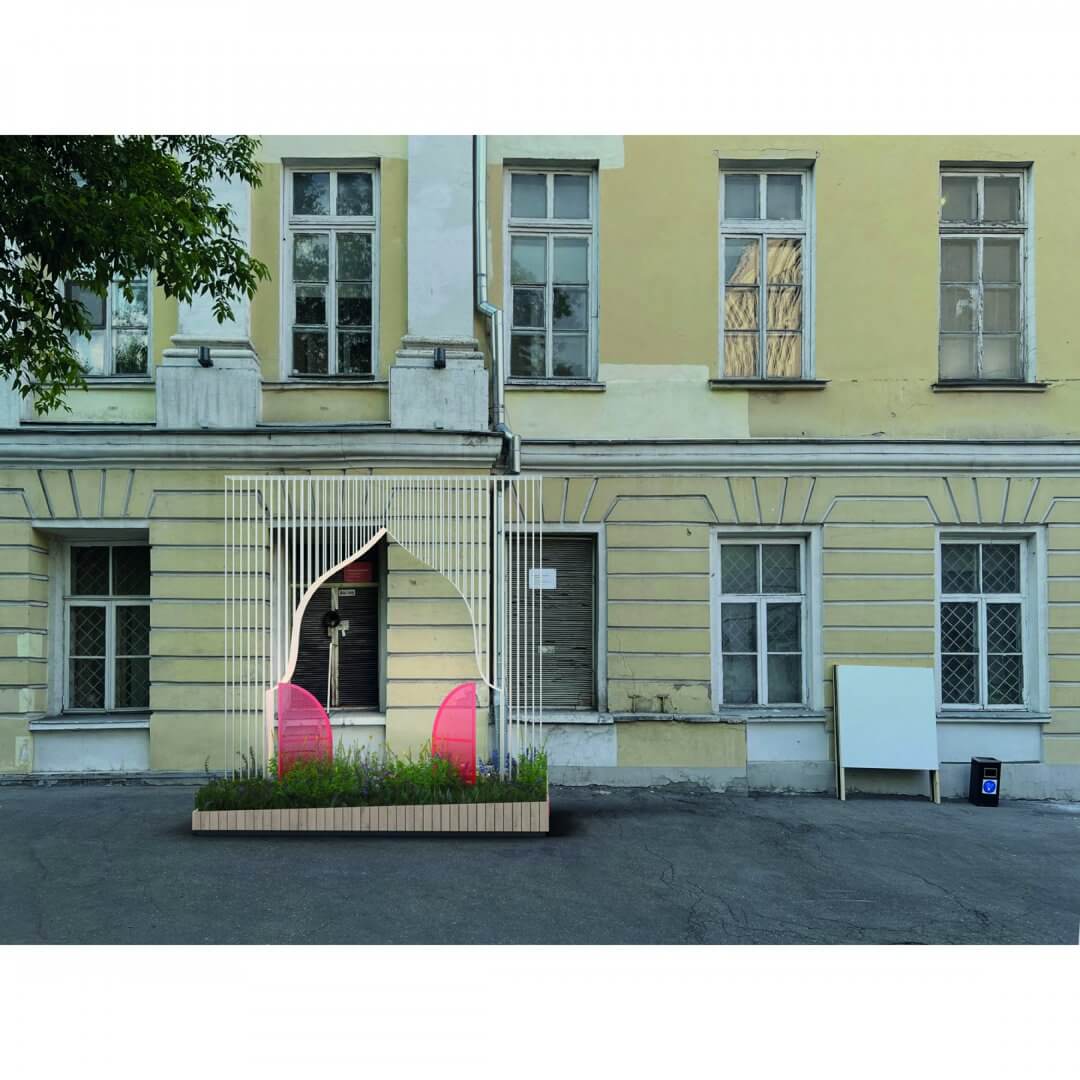Shaimardanova Elina
The “Sense of Time” contest marked the 150th anniversary of the famous Russian architect Alexey Shchusev. The task of the competition was to create a proposal for a spatial art object to be placed in the courtyard of the Shchusev Museum of Architecture.
Introduction
Alexey Shchusev was a Russian and Soviet architect who was successful during three consecutive epochs of Russian architecture – Art Nouveau (broadly construed), Constructivism, and Stalinist architecture, being one of the few Russian architects who received numerous accolades and held important positions such as the president of the Academy of Arts of the USSR and director of the Moscow Architectural Institute. His work and contributions left a lasting impact on Russian and Soviet architecture, and he is considered one of the most influential architects of his time.
The task of the “Sense of Time” contest was to create a proposal of a spatial art object for placement in the courtyard of the Shchusev Museum of Architecture. The design should conceptually correspond to the theme and idea of the competition, harmoniously fit into the courtyard space and comply with current architectural and design trends, as well as the criterion of uniqueness. Any creativity in Russia now is reflecting the experience of the war, the growing censorship, and rapidly collapsing contacts with the outside world. Our predecessors in the 1930s likely suffered similar experiences, the beginning of a long period of reprisals and the growing propaganda of an external enemy.
Concept Background
My proposal addresses the early period of Schusev’s work, particularly the 1900s when he established himself as a church architect and developed his unique proto-modernist style, which blended Art Nouveau with Russian Revival architecture. This time preceded the Russian revolution. A few decades later when Stalin came to power and stopped any free Russian creativity for a long time, people could only show their attitude with the aid of the Aesopian language.
To shape my design, I drew inspiration from an element of the entrance group [portal] of the Trinity Cathedral of the Pochayiv Lavra, located in Western Ukraine. Schusev commissioned the artist Piotr Neradovski to paint this portal. It is interesting to look at the relationship between artists: subsequently Neradovski was arrested multiple times on false charges during the period of the great Stalinist purges. However, he was eventually released due to the advocacy of Schusev and other esteemed artists and architects approved by the Soviet regime. My concept hints that interpersonal relations are fragile and can be easily disrupted. The contexts of the past can be erased through propaganda, and the continuity across historical periods can be destroyed. In contrast, architecture, with its monumental and unwieldy nature, preserves evidence of these connections, whether we desire it or not.
Spatial structure details
The installation does not require grounding fixtures — a stable platform doubles as a planter with perennial wildflowers. The coverage of the planter is made of wooden planks, linked with other existing wooden elements of the museum courtyard. The composition itself consists of lightweight steel round rods and screens made of perforated metal sheet. All this ensures the transportability of the composition. All materials and coatings used are stable and unpretentious in outdoor use.
Author: Shaimardanova Elina.
Location: Moscow, Russia.
Year: 2023
Competition: Sense of time.
Prize: Shortlisted.
